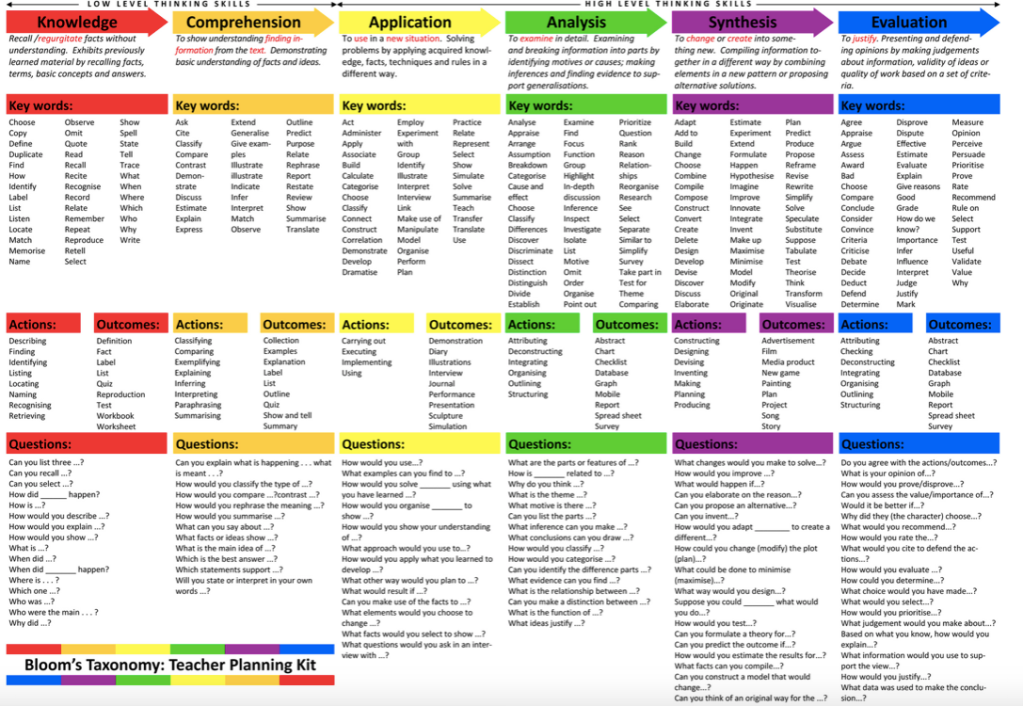Bloom’s Taxonomy should be your lifeline in teaching. It outlines low-level thinking to high-level thinking skills:
- Knowledge
- Comprehension
- Application
- Analysis
- Synthesis
- Evaluation

When construct a lesson sequence, you should always consider the order of thinking. Do you want your students to memorise facts, analyse data, compare different theories, or evaluate a criteria against a piece of writing?
We should consider Bloom’s Spiralling. We start with introducing vocabulary and low-order thinking. This is to establish a starting point for learning. Vocabulary is the tools that students will use for future learning. We then build up and develop their comprehension and beyond.
If I am getting my students to read short stories for the first time in Year 7, I will likely not start with evaluating the language and word choice. I want to start with knowledge – the vocabulary that will be most important to them throughout the entire study.
First, we will look at the narrative conventions – character, plot, theme, setting, conflict – and then we can start making deeper connections with comparing the behaviour or qualities of characters.
In the attached diagram, you will see:
- Definition of each level of thinking
- Action words
- Outcomes for the level of thinking
- Question stems
When constructing a lesson, consider where you want your lesson to end, with regards to the learning (What skills should your students have developed?) and how you might arrive there.
If I want my students to evaluate the word choice in a poem (EVALUATION), they first must develop the KNOWLEDGE behind poetic devices and knowing how to annotate. If I proceed and ask my students to analyse the poem before they understand what a poem is, it goes without saying that they will not achieve their greatest potential.
15 thoughts on “Bloom’s Taxonomy: Pathway to Higher Order Thinking”